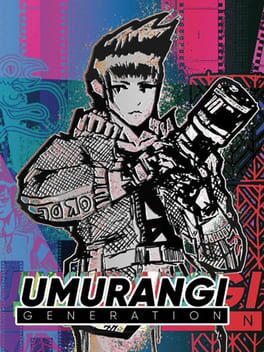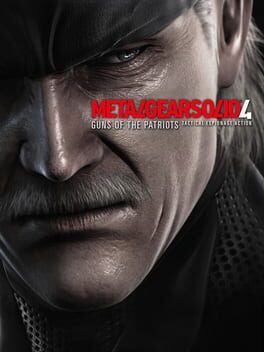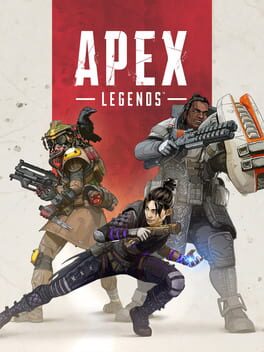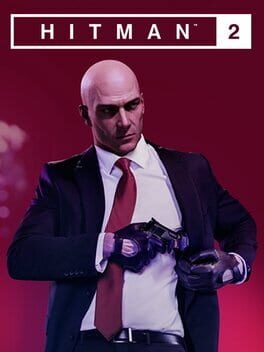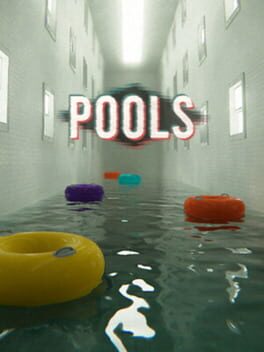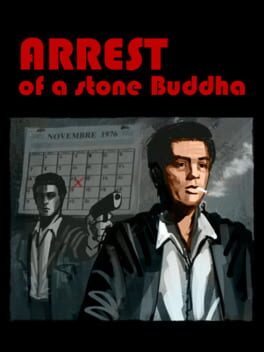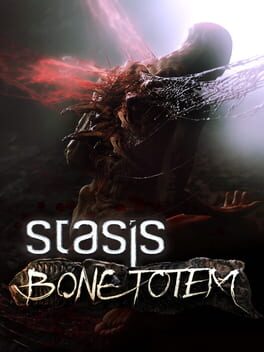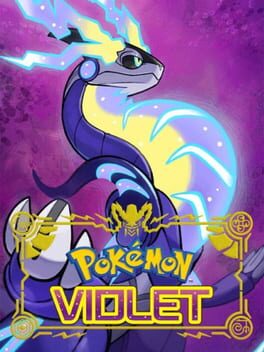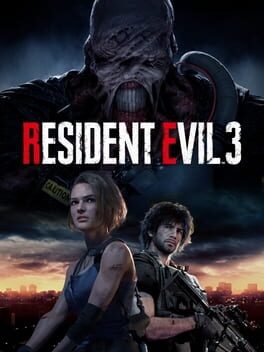Fauxscerf
"Every great magic trick consists of three parts or acts."
Jumpman is the realest a gaming character's ever been. Feet, hop and time. One forward movement in space - or two, actually - pull(s) us back into the Kingdom, into its familiar rhythms and tunes ready to be upset by the variables of our inputs. It’s on.
"The first part is called "The Pledge". The magician shows you something ordinary: a deck of cards, a bird or a man. He shows you this object. Perhaps he asks you to inspect it to see if it is indeed real, unaltered, normal. But of course... it probably isn't."
So the very first thing I notice upon booting is the way Mario now enters a pipe, instead of reverting to a default pose he contextually transitions from a jump, ground-pound, run or even simple press of the down-arrow on your directional cross like the frames of a true hand-drawn, motion picture animated character; as the rush horizontally stuffs him into a tube, his cap remains suspended in midair for half-a-second, just enough time for us to notice and for him to grab it with one hand, finally penetrating deeper into the level. I use the word "penetration" here because I think it appropriately reflects the physical relationship the game wishes to establish at that moment between Mario and its environment; by so directly making a case of each entry and exit as cartoonish friction, Super Mario Bros. Wonder makes us notice, makes us remember what it felt like grabbing an old magazine on our way home from school, craving for this return to the digital world. This is a 2D-world given the scent of nostalgia and the depth of simulacrum.
"The second act is called "The Turn". The magician takes the ordinary something and makes it do something extraordinary. Now you're looking for the secret... but you won't find it, because of course you're not really looking. You don't really want to know."
These worlds are oases and therefore act as such. At their core hides a series of wonders for us to play through and into - onscreen fingers if you will, fiddling and remaking the very fabric of each level -, in doing so adding further splashes to the experience of interacting with this reactive plateau that isn't really one in the first place. The beautiful twist is that there is no twist - the oasis doesn't change, it fundamentally can't, but the space in which it occurs (its contextual aesthetic) is itself subject to change. Mario transforms into an elephant and suddenly flowers sprout anew in his wake. Collect some water, feed the earth. Collect another flower and this time the whole world finds a second life, rigidity now dictated by fluid motions. The box bends into a circle. Always, what's next. This distorsion of shape is the heartbeat of Super Mario Bros. Wonder because it is, in effect, a direct statement of power from the game to the player. This is what a wonder does. It's as if the levels themselves could now jump of their own accord. Wonder, wonderful.
"You want to be fooled. But you wouldn't clap yet. Because making something disappear isn't enough; you have to bring it back. That's why every magic trick has a third act, the hardest part, the part we call "The Prestige".”
With Wonder I keep on circling around this thought that we've been participating in a wholesome fanfare, smearing us with coins and particles that leave little trace once the screen is shut. I don't doubt the soul-magic but its application, and so words like "joy" or "(re)invention" make a paranoid man outta me, make me feel like we're missing something amidst the obvious Nintendo wizardry that is at play here, trading-in the technicalities for visual spectacle and really is this Wonder any different than the bark of a trillion polygons rendered in open-world vanity. Worlds don’t have to react to me but I need to react to them. Wonder has a Spiderverse-sized problem - the second one - in the sense that its exhaustivity wears me thin with a certain excess of enthusiasm for the form. The sprite-like (near painterly) aspect of the presentation as Digital Foundry put it in their technical breakdown produces as many flourishes as it bloats out the possibility of any more complex game feel arising throughout the levels. First, every wonder interaction should come with a timer - or at the very least an incentive to urgency - that constrains the player into experiencing the "switch" as a proper play-capsule and second is the lack of punctuation in the placement of these events, less a suite spaced-out into crescendos that iterate upon what's come before than a supermarket stack of variations on the same exclamation mark. The platforming feels responsive, yes, bouncy like never before yet completely childish. This version of Mario is dedicated to the immediate response each press of a button must produce on screen, of which the movement system is a good example : spreading traversal options into badges limits both our range of expression and the level-design's complexity in ways that only become clear as the difficulty attempts to ramp up without ever truly peaking, precisely because you can only design so much around the limits of basically one extra-ability per-course, culminating in one of the most bog-standard incarnations of Bowser as a final boss yet in the series. This tale was also that of Breath of the Wild; craft alone cannot lend a strong sense of direction to the work, otherwise we end up with what amounts to an expensive technical demo - here, and time and again before this, sold to us as this expression of genuine videogame affection. So really, what are we talking about when we qualify Nintendo as one of the last bastions of true "play"? With every level we're flung into a new micro-dosed reality offering everything and nothing all at once. The projected value of imagination without practical gameplay applications of its aesthetic principle. Rainbow refreshes on stainless materials. And thus the Prestige is attained. These pixels bleed emotions, don't they?
Mario is magic. Always has, always will. But magic’s overrated anyway and the spell that binds us to the caster matters less in the end than knowing their hand was real in the first place. Super Mario Bros. Wonder feels wholly digital, like the type of image you could clip on an Instagram aesthetic feed to recall in ten years as a whole vibe that we got to collectively experience and then shuffle out of memory entirely. But the most frustrating aspect of it all is that Nintendo is so close to connecting the dots lyrically, the technological foundation is there, along with a troves of ideas and genuine artistic highs that would make this the kind of games I’d wished I played as a kid. At times the mind does wander, and you can see it all through the pastels. The bullrushes and the lollipop constellations. Fragments of true videogame. It's in the magma coastlines and the stone archways turning into blue hues of a dragon. A light-switch logic producing simple effects of relations between objects. Sometimes simple is best. Like pipework taking on a life of its own. That shit is so cool to me, but then it disappears, is never explored in a way that would allow their geometries to imprint themselves onto me past the next change of shape. The real trick was always the most straightforward one : you press a button and the wee-little guy jumps. What comes after that is pure, simple accessory to play. But it's what you do with that fact, how much you're willing to commit to it, that makes all the difference. Or in the words of Elpadaro F. Electronica Allah :
Extra honey in my tea but pay no homage to the bee
Whatever happened to us?
And will we ever come and let the magic tap into us?
Jumpman is the realest a gaming character's ever been. Feet, hop and time. One forward movement in space - or two, actually - pull(s) us back into the Kingdom, into its familiar rhythms and tunes ready to be upset by the variables of our inputs. It’s on.
"The first part is called "The Pledge". The magician shows you something ordinary: a deck of cards, a bird or a man. He shows you this object. Perhaps he asks you to inspect it to see if it is indeed real, unaltered, normal. But of course... it probably isn't."
So the very first thing I notice upon booting is the way Mario now enters a pipe, instead of reverting to a default pose he contextually transitions from a jump, ground-pound, run or even simple press of the down-arrow on your directional cross like the frames of a true hand-drawn, motion picture animated character; as the rush horizontally stuffs him into a tube, his cap remains suspended in midair for half-a-second, just enough time for us to notice and for him to grab it with one hand, finally penetrating deeper into the level. I use the word "penetration" here because I think it appropriately reflects the physical relationship the game wishes to establish at that moment between Mario and its environment; by so directly making a case of each entry and exit as cartoonish friction, Super Mario Bros. Wonder makes us notice, makes us remember what it felt like grabbing an old magazine on our way home from school, craving for this return to the digital world. This is a 2D-world given the scent of nostalgia and the depth of simulacrum.
"The second act is called "The Turn". The magician takes the ordinary something and makes it do something extraordinary. Now you're looking for the secret... but you won't find it, because of course you're not really looking. You don't really want to know."
These worlds are oases and therefore act as such. At their core hides a series of wonders for us to play through and into - onscreen fingers if you will, fiddling and remaking the very fabric of each level -, in doing so adding further splashes to the experience of interacting with this reactive plateau that isn't really one in the first place. The beautiful twist is that there is no twist - the oasis doesn't change, it fundamentally can't, but the space in which it occurs (its contextual aesthetic) is itself subject to change. Mario transforms into an elephant and suddenly flowers sprout anew in his wake. Collect some water, feed the earth. Collect another flower and this time the whole world finds a second life, rigidity now dictated by fluid motions. The box bends into a circle. Always, what's next. This distorsion of shape is the heartbeat of Super Mario Bros. Wonder because it is, in effect, a direct statement of power from the game to the player. This is what a wonder does. It's as if the levels themselves could now jump of their own accord. Wonder, wonderful.
"You want to be fooled. But you wouldn't clap yet. Because making something disappear isn't enough; you have to bring it back. That's why every magic trick has a third act, the hardest part, the part we call "The Prestige".”
With Wonder I keep on circling around this thought that we've been participating in a wholesome fanfare, smearing us with coins and particles that leave little trace once the screen is shut. I don't doubt the soul-magic but its application, and so words like "joy" or "(re)invention" make a paranoid man outta me, make me feel like we're missing something amidst the obvious Nintendo wizardry that is at play here, trading-in the technicalities for visual spectacle and really is this Wonder any different than the bark of a trillion polygons rendered in open-world vanity. Worlds don’t have to react to me but I need to react to them. Wonder has a Spiderverse-sized problem - the second one - in the sense that its exhaustivity wears me thin with a certain excess of enthusiasm for the form. The sprite-like (near painterly) aspect of the presentation as Digital Foundry put it in their technical breakdown produces as many flourishes as it bloats out the possibility of any more complex game feel arising throughout the levels. First, every wonder interaction should come with a timer - or at the very least an incentive to urgency - that constrains the player into experiencing the "switch" as a proper play-capsule and second is the lack of punctuation in the placement of these events, less a suite spaced-out into crescendos that iterate upon what's come before than a supermarket stack of variations on the same exclamation mark. The platforming feels responsive, yes, bouncy like never before yet completely childish. This version of Mario is dedicated to the immediate response each press of a button must produce on screen, of which the movement system is a good example : spreading traversal options into badges limits both our range of expression and the level-design's complexity in ways that only become clear as the difficulty attempts to ramp up without ever truly peaking, precisely because you can only design so much around the limits of basically one extra-ability per-course, culminating in one of the most bog-standard incarnations of Bowser as a final boss yet in the series. This tale was also that of Breath of the Wild; craft alone cannot lend a strong sense of direction to the work, otherwise we end up with what amounts to an expensive technical demo - here, and time and again before this, sold to us as this expression of genuine videogame affection. So really, what are we talking about when we qualify Nintendo as one of the last bastions of true "play"? With every level we're flung into a new micro-dosed reality offering everything and nothing all at once. The projected value of imagination without practical gameplay applications of its aesthetic principle. Rainbow refreshes on stainless materials. And thus the Prestige is attained. These pixels bleed emotions, don't they?
Mario is magic. Always has, always will. But magic’s overrated anyway and the spell that binds us to the caster matters less in the end than knowing their hand was real in the first place. Super Mario Bros. Wonder feels wholly digital, like the type of image you could clip on an Instagram aesthetic feed to recall in ten years as a whole vibe that we got to collectively experience and then shuffle out of memory entirely. But the most frustrating aspect of it all is that Nintendo is so close to connecting the dots lyrically, the technological foundation is there, along with a troves of ideas and genuine artistic highs that would make this the kind of games I’d wished I played as a kid. At times the mind does wander, and you can see it all through the pastels. The bullrushes and the lollipop constellations. Fragments of true videogame. It's in the magma coastlines and the stone archways turning into blue hues of a dragon. A light-switch logic producing simple effects of relations between objects. Sometimes simple is best. Like pipework taking on a life of its own. That shit is so cool to me, but then it disappears, is never explored in a way that would allow their geometries to imprint themselves onto me past the next change of shape. The real trick was always the most straightforward one : you press a button and the wee-little guy jumps. What comes after that is pure, simple accessory to play. But it's what you do with that fact, how much you're willing to commit to it, that makes all the difference. Or in the words of Elpadaro F. Electronica Allah :
Extra honey in my tea but pay no homage to the bee
Whatever happened to us?
And will we ever come and let the magic tap into us?
2023
You wish this ladder had a song. But who is left to write it?
A Ground Zeroes flick acting in reverse; punishment instead of extraction. Delicious cruelty. The prisoners hide in their nowhere bunkers with guards patrolling their cramped steel corridors like the automatons that they are whilst you stalk each one relentlessly in order to absorb their essence - behind this metal mask, the byproduct of industrial gears and dead stars, a computer left to run alone in a dark room.
In the end nobody will be left to watch the execution.
A Ground Zeroes flick acting in reverse; punishment instead of extraction. Delicious cruelty. The prisoners hide in their nowhere bunkers with guards patrolling their cramped steel corridors like the automatons that they are whilst you stalk each one relentlessly in order to absorb their essence - behind this metal mask, the byproduct of industrial gears and dead stars, a computer left to run alone in a dark room.
In the end nobody will be left to watch the execution.
2020
2017
2019
This game doesn't know when to stop. Every single thing in it is put in place so as to facilitate the player's relationship with the object - the way you glide, shoot and relate to its characters. So of course it's fun - at times exhilaratingly so - but I find myself demanding an annoyance, a chance to breathe that would get in the way of this constant flow of "things".
This is not Respawn's design though, because Apex Legends is slick, accomplished. But just as I can play ten games in a row while finding new ways to approach its gunfights, I will put it down at a moment's notice and leave with no hesitation, no sense of longing.
Apex Legends is violently pedestrian.
[Updated since I replayed the game quite a bit these days]
This is not Respawn's design though, because Apex Legends is slick, accomplished. But just as I can play ten games in a row while finding new ways to approach its gunfights, I will put it down at a moment's notice and leave with no hesitation, no sense of longing.
Apex Legends is violently pedestrian.
[Updated since I replayed the game quite a bit these days]
2018
2024
POOLS kinda betrays itself. Frightening sonic precision gives way to impossible spaces that revel in their own exhibition. You can't make an art installation out of the Backrooms because then it turns an eerie human-made feeling - that moment where reality sips back through us - into something safe, a thing haunted by concepts more than consciouness.
Prime example of a bitch who be doing too much.
Prime example of a bitch who be doing too much.
2011
Arrest of a stone Buddha lies.
It’s not immediately apparent nor is the revelation striking in nature but the lie or, rather, the absence of telling permeates each frame. Flair is the primary mode of conveyance here ; the charm of retro games meets the stylishness of a John Woo flick. Hitman is searching for an answer in 70s France. Take the dread of Slavic game-design and watch it morph into high-concept anime motions. You’re fast and lucky enough so you don’t plan your actions too far. You kill with one shot and you never miss. It’s the kind of nihilistic manifesto games have become so good at over the years, where killing turns into an operation of existential purge. What’s the point of moving forward when death is so clearly in sight ? We’ve all seen this story - this swan song – a million times. Virtual entrapments. This play, repeated in front of us, by us. In a sense, even before us. You know from minute one, nested in this “fausse” Notre-Dame with a gun to the priest’s temple, how it all ends. Killer is Dead.
But let’s rewind nonetheless. What is Arrest of a stone Buddha about ? Like I said, it’s explicitly about the back of the box : An assassin and a city and a question. There’s no point in really teasing it any further ; it’s the story of a man searching for meaning in-between the killings that punctuate his life. Though perhaps we can see it in reverse ; actually, let’s look at it this way. It’s the story of a man actively searching for meaning within the killings themselves. So every time his job’s done he sits on a bench with a friend, his contractor – his lover ? Lines are blurred anyway. And then comes a question. “When’s the next assignment ?” It’s a one-way conversation between the world and his shadow. ”Lanky got killed.” No response – none that matters anyway. He mutters a few words as Erik Satie‘s Gnossienne plays in the background. If it wasn’t evident enough beforehand, I’ll reiterate for good measure ; Arrest of a stone Buddha is not just moody, it’s bleak.
“Just find something okay ?“
”I will.“
Now you roam the streets from dusk till dawn. Light a cigarette on your way to the movies. Or scratch that, turn around and booze yourself into altering the very soundscape of the game in some Parisian cafe. It’s the other side of the experience : Call it daily-reality simulator. Shenmue impersonator. A performative exercice in living stuck inside a death loop. From the graveyard to the bar and back again, the only certainty is our forward movement in time. Somedays a storm, somedays a mere wandering. Until you reach the date that’s been circled in red above your bed. This 7th of November 1976. The day one chooses to die.
.
The body count of Buddha is thankfully ridiculous. Every gunfight acts as the missing link in a series of finales that keep on stacking upon one another. At times it’s exhausting, an impossible march where enemies keep pouring out of each side of the screen until we either make an escape or join the growing pile. But one does not rush to the finishing line here – the death drive must be consumed, soaked-in through accumulation. There’s no denying the scene is absurd, but contemplate it long enough and it forces a certain kind of empathy upon you. The relentlessness with which Buddha forces you to slog through murderous armies demands a pause, a constant inhabitance in this body of labour – it’s one kill to a thousand, all located at the source of your character. Breathe in, then dance. This is By Yeo at his best : Beauty by blunt force; a trauma that outlasts the bang of the iron. If Arrest of a stone Buddha was to be shrunk down to its most basic elements, it would be a matter of binaries. Left or Right. Whisky or murder. Which direction spares us a bullet and which one keeps the killer going for another day? Bullseye or bust. An affair of life and death in the plural – or rather of exquisite repetition, of withstanding this dying in service of something. I noted earlier that the gunfights of Arrest of a stone Buddha were a unique gesture of pedestrian violence ; looking back on it, I think a better term would be “limping”. Failure is inevitable, the game makes sure of that (the further you move through a shooting gallery, the more accurate the goons around you become and sometimes a cruel trick is pulled on you ; just as you’re about to walk out of the frame, you meet your fate at the end of a barrel summoned by off-screen depths). Weapons are made irrelevant by their empty magazines, so the only way to procure yourself another is to wrestle one away from your agressors. This in turn requires a closer approach, leaving you vulnerable to the pace of the game’s incessant happening. There is always something, both wonderfully intricate and brutally evident, going on in those exchanges of bullets – dodged shots followed by a collective charge, a scope adjusting its aim with your skull. Out of fire and out of time. The key here is to embrace how perpetual the collapse is in hindsight. You get good at it eventually, it’s still just a videogame after all. But the feeling never really goes away. Miss the coup de théâtre and another swiftly comes your way. Now your move friendo ; you have to, keep walking. Shooting. Doing. Something’s got to give, so even when it means nothing a choice must be made. Hell or high water.
.
Every assassination attempt begins with Buddha at a standstill. Tinted windows for a stray car. A restaurant table whose dishes are getting cold. The killer and the target. Hold [R] to aim your weapon ; press [X] to shoot – and then the music starts.
“I’ve got to get the hell out of here.“
In Arrest of a stone Buddha, every assassination attempt culminates in a single frame of grotesque still life. The pure and quiet spectacle of sidescrolling generation. Stop, start ; and suddenly, a wave.
A parking lot, overflowing.
Mobsters by the dozen, all converging
On this single point in time
And space, where you lie.
A forest shootout leaving
No trace.
“I have a train to take.“
To nowhere, in particular.
To a room with a view,
To a rooftop, another
Man is sitting at a bus stop with
Ten corpses down.
.
In the streets of Arrest of a stone Buddha, I always stroll with my hands in my pockets. It’s not really about the style, it’s performance. I am comfortably away from the simulacra but I wish to engage, to blend-in. At night, the edges of my screen become vectors of paranoïa ; silhouettes in trench coat walk past me quickly and I come to fear their passage. They’re just bots – pallid imitations of behaviour – but my violent strides have produced this strange overlapping motion where I am, simultaneously, above and beneath. My rampage invades every spaces of the city – bullet wishes against glass pedestrians. They share my proximity for a fleeting second before disappearing again, never interacting, never harming my little killer in any way. The greatest trick Arrest of a Stone Buddha pulls on the player is to switch perceptions into a set of compulsory habits, from one space to the other; what does it take to press the trigger ? Nothing more – and nothing less – than a corridor to dwell in the levels where I can properly identify and recognize better. A target that was never really there in the first place.
It's a story of the meaningless decisions that animate everyday life.
It's a tale about choosing to be someone else, even if it’s just for the time it takes to smoke a cigarette.
A lie on a respirator.
A fantasy fed one day at a time, until the date is reached. Until it’s impossible to go on anymore.
7th of November.
You’re alone in your room. I am alone in mine. You hold the first button to aim.
Then I press [X] to shoot.
Or maybe not. Maybe both decisions are taken at the same time.
Maybe in the end we keep on dancing.
In this life or the next.
—————————————
Originally posted on VDT, a while ago.
It’s not immediately apparent nor is the revelation striking in nature but the lie or, rather, the absence of telling permeates each frame. Flair is the primary mode of conveyance here ; the charm of retro games meets the stylishness of a John Woo flick. Hitman is searching for an answer in 70s France. Take the dread of Slavic game-design and watch it morph into high-concept anime motions. You’re fast and lucky enough so you don’t plan your actions too far. You kill with one shot and you never miss. It’s the kind of nihilistic manifesto games have become so good at over the years, where killing turns into an operation of existential purge. What’s the point of moving forward when death is so clearly in sight ? We’ve all seen this story - this swan song – a million times. Virtual entrapments. This play, repeated in front of us, by us. In a sense, even before us. You know from minute one, nested in this “fausse” Notre-Dame with a gun to the priest’s temple, how it all ends. Killer is Dead.
But let’s rewind nonetheless. What is Arrest of a stone Buddha about ? Like I said, it’s explicitly about the back of the box : An assassin and a city and a question. There’s no point in really teasing it any further ; it’s the story of a man searching for meaning in-between the killings that punctuate his life. Though perhaps we can see it in reverse ; actually, let’s look at it this way. It’s the story of a man actively searching for meaning within the killings themselves. So every time his job’s done he sits on a bench with a friend, his contractor – his lover ? Lines are blurred anyway. And then comes a question. “When’s the next assignment ?” It’s a one-way conversation between the world and his shadow. ”Lanky got killed.” No response – none that matters anyway. He mutters a few words as Erik Satie‘s Gnossienne plays in the background. If it wasn’t evident enough beforehand, I’ll reiterate for good measure ; Arrest of a stone Buddha is not just moody, it’s bleak.
“Just find something okay ?“
”I will.“
Now you roam the streets from dusk till dawn. Light a cigarette on your way to the movies. Or scratch that, turn around and booze yourself into altering the very soundscape of the game in some Parisian cafe. It’s the other side of the experience : Call it daily-reality simulator. Shenmue impersonator. A performative exercice in living stuck inside a death loop. From the graveyard to the bar and back again, the only certainty is our forward movement in time. Somedays a storm, somedays a mere wandering. Until you reach the date that’s been circled in red above your bed. This 7th of November 1976. The day one chooses to die.
.
The body count of Buddha is thankfully ridiculous. Every gunfight acts as the missing link in a series of finales that keep on stacking upon one another. At times it’s exhausting, an impossible march where enemies keep pouring out of each side of the screen until we either make an escape or join the growing pile. But one does not rush to the finishing line here – the death drive must be consumed, soaked-in through accumulation. There’s no denying the scene is absurd, but contemplate it long enough and it forces a certain kind of empathy upon you. The relentlessness with which Buddha forces you to slog through murderous armies demands a pause, a constant inhabitance in this body of labour – it’s one kill to a thousand, all located at the source of your character. Breathe in, then dance. This is By Yeo at his best : Beauty by blunt force; a trauma that outlasts the bang of the iron. If Arrest of a stone Buddha was to be shrunk down to its most basic elements, it would be a matter of binaries. Left or Right. Whisky or murder. Which direction spares us a bullet and which one keeps the killer going for another day? Bullseye or bust. An affair of life and death in the plural – or rather of exquisite repetition, of withstanding this dying in service of something. I noted earlier that the gunfights of Arrest of a stone Buddha were a unique gesture of pedestrian violence ; looking back on it, I think a better term would be “limping”. Failure is inevitable, the game makes sure of that (the further you move through a shooting gallery, the more accurate the goons around you become and sometimes a cruel trick is pulled on you ; just as you’re about to walk out of the frame, you meet your fate at the end of a barrel summoned by off-screen depths). Weapons are made irrelevant by their empty magazines, so the only way to procure yourself another is to wrestle one away from your agressors. This in turn requires a closer approach, leaving you vulnerable to the pace of the game’s incessant happening. There is always something, both wonderfully intricate and brutally evident, going on in those exchanges of bullets – dodged shots followed by a collective charge, a scope adjusting its aim with your skull. Out of fire and out of time. The key here is to embrace how perpetual the collapse is in hindsight. You get good at it eventually, it’s still just a videogame after all. But the feeling never really goes away. Miss the coup de théâtre and another swiftly comes your way. Now your move friendo ; you have to, keep walking. Shooting. Doing. Something’s got to give, so even when it means nothing a choice must be made. Hell or high water.
.
Every assassination attempt begins with Buddha at a standstill. Tinted windows for a stray car. A restaurant table whose dishes are getting cold. The killer and the target. Hold [R] to aim your weapon ; press [X] to shoot – and then the music starts.
“I’ve got to get the hell out of here.“
In Arrest of a stone Buddha, every assassination attempt culminates in a single frame of grotesque still life. The pure and quiet spectacle of sidescrolling generation. Stop, start ; and suddenly, a wave.
A parking lot, overflowing.
Mobsters by the dozen, all converging
On this single point in time
And space, where you lie.
A forest shootout leaving
No trace.
“I have a train to take.“
To nowhere, in particular.
To a room with a view,
To a rooftop, another
Man is sitting at a bus stop with
Ten corpses down.
.
In the streets of Arrest of a stone Buddha, I always stroll with my hands in my pockets. It’s not really about the style, it’s performance. I am comfortably away from the simulacra but I wish to engage, to blend-in. At night, the edges of my screen become vectors of paranoïa ; silhouettes in trench coat walk past me quickly and I come to fear their passage. They’re just bots – pallid imitations of behaviour – but my violent strides have produced this strange overlapping motion where I am, simultaneously, above and beneath. My rampage invades every spaces of the city – bullet wishes against glass pedestrians. They share my proximity for a fleeting second before disappearing again, never interacting, never harming my little killer in any way. The greatest trick Arrest of a Stone Buddha pulls on the player is to switch perceptions into a set of compulsory habits, from one space to the other; what does it take to press the trigger ? Nothing more – and nothing less – than a corridor to dwell in the levels where I can properly identify and recognize better. A target that was never really there in the first place.
It's a story of the meaningless decisions that animate everyday life.
It's a tale about choosing to be someone else, even if it’s just for the time it takes to smoke a cigarette.
A lie on a respirator.
A fantasy fed one day at a time, until the date is reached. Until it’s impossible to go on anymore.
7th of November.
You’re alone in your room. I am alone in mine. You hold the first button to aim.
Then I press [X] to shoot.
Or maybe not. Maybe both decisions are taken at the same time.
Maybe in the end we keep on dancing.
In this life or the next.
—————————————
Originally posted on VDT, a while ago.
2023
In stench there is a story.
A genuinely moving articulation of faith through virtual mediums. Hope dies in the vacuum of space and is found again through deep water, with horror stemming from the blood fuselage of sullen muscles stretched across the clockwork machinery of corporate empire; on the oceanic floor where my suns were drowned I emerge - a nü-man. I am a very smart bear now. I will see the sky.
The world of Stasis left a gash-wide imprint on me because like the dead genre that it is point’n’click needs a jolt, to be dragged across waves engines and into a space where flesh and interface meld into one - behold, my precious Bone Totem. The convergence point of adventure-play with a place vivid enough to make the trajectory of our clicks worth more than a mere curious inquiry of hidden nooks and crannies. My sea is no corporation, my sea will crush you. There can be no logical order of exploitation to the whims of the depth's currents therefore locating your story inside an environment whose hostility far surpasses any capital contempt, that will only deal in blood and iron as its sacred currencies; to make it through the day deeper truths need to be held - a belief in something other than broken ribs, powered by said-broken ribs. DEEPSEA15’s all rust and grime, a place for the true masochists, lovers of algaes and wire-grids alike, actively pressing down where it hurts and yet prodding at our insides with a great deal care - binding itself instead of shredding our characters, a slow-burn of cog-wheeled violence amidst stormy seas. Oil rig's always the play, because here it's the only play. Nobody wants to be down there yet we’re all exactly where we're meant to be - wound up in this great skeleton unfit for any sort of humane life, unable to function for long without our continued presence within itself. And in this mother of all contraptions “the only way out is through.”
The big question posed by Bone Totem's vast array of characters and computer terminals is as follows : Is survival even worth it in this world? Capital has become its own religion & theology, a literal promise of digital afterlife for the devout worker while their exploitation fuels the expansion of CAYNE Corporation and its Churches into further enslaving mankind. Liberation only exists in the glimpses of shadow organizations off-world whose motives may not even be all that benevolent and by the time the credits roll on the last act's torture porn, barely anyone is left alive to answer my questions. This is a story about what happens when you take the pay that's too good to pass and sink in the process anyway. In the derelict's underbelly Charlie, Mac and Moses make sickly sweet bed, a grieving couple and their teddy bear, each one pushed to go on by their faith in something larger than themselves - that could save them as much as it could swallow their body and soul whole. Mac is a true believer in Cayne's gospel, implanted with the technology that's supposed to transport his mind into the Nexus at the final hour; Charlie's the practical cynic, a clever and desperate engineer, while Moses sits in-between those two as Bone Totem's touch of uncanny valley genius : It's their dead daughter's animatronics bear, one infused with the artificial intelligence to match; a pure soul in the most profane body. The second stroke of ingenuity of the narrative lies in the use of each character's abilities throughout the game and the way they communicate with one another : Mac possesses the brute-strength to bend contraptions to his will while Charlie's the crafting expert who will make sparks out of the inert. Moses, due to its size and circuitry, finds wiggle room in ventilation shafts and back-panel motherboards to get its "humans" out of tight spots. But what binds this whole system together is the ability to AirDrop objects between the three of 'em in order to take advantage of their respective skills at any moment, swapping perspectives and squeezing the abstract bits out of gameplay, the actual pointing and clicking pushed to serve a constant state of fiddling and putting things together, connecting skin to metal and arteries towards their new orifices, making due of the broken state of it all just to get through the day in one piece. Shit’s a breeze for my monkey brain, as much as a slow, catastrophic systemic failure of corporate machinery can in any way be qualified as swift - spaces compressing and then stretching themselves, water-filled elevators in contrast to their air pockets, finding finality - always - in death puzzles whose fail-states splatter in grizzly 3D. Here violence is not so much a shock factor as it is the character-building exercise in which we partake with all its sloshing steel atrocity. Only the most broken and dysfunctional of families could get through this. But even then survival is not the point in Bone Totem. What sits at the heart of the game's troubled conscience is artifice and hesitation - how we may progressively find ourselves bound by the clauses of the new flesh. Everyone on DEEPSEA15 is kept on a loose leash, wanting out of the hurt that comes from being born in this putrid place called reality. And it's not happening. And it keeps happening. No one's got the answer - but we can't leave.
[This is a MULE Emergency Broadcast]
WATER PRESSURE REACHING CRITICAL LEVELS_
SEEK THE SUN OR DROWN IN THE DEEP_
BE A GOOD BEAR NOW_
Towards the end of third chapter, Moses discovers that one of the trapped scientists who's been helping him through radio in exchange for his own freedom was nothing more than a brain in the proverbial jar, condemned to sink with the rest of the station. We enter a room and find the cable-crucified approximation of a circulatory system atop which sits what little remains of Faran, a consciousness unaware of their own predicament. Eyes in the dark. It's impossible for me not to think of my first steps back in PATHOS-II, finding the robot body of Carl Semken and him looking at me, believing, truly believing, that he was still human - and then unplugging the cord because the only way out is through. Bone Totem walks a lot like SOMA - threading a bleak and complex existential line - but what separates it from Frictional's work mirrors the gap in emotional fortitude between the original Blade Runner and 2049. The question that gets its hooks into me isn't whether Deckard is a replicant or not and, henceforth, if androids do indeed dream of electric sheeps but rather the turnstiles of such an existence, or in other words, what meaning do you ascribe to the wooden horse that K finds in the furnace? Knowing you are a byproduct possessing the ability - however life-like in its fakery - to feel things and coming back to DEEPSEA15 with that same line of questioning, from Moses to Faran, presents a difficulty...the horse could, in essence, mean nothing - in fact it does. So why the struggle? Moses is remarkable in his artificiality because it grants him the most human quality a robot could have : Delusion. Contrary to Faran who scorns his watery prison as a physical manifestation of Hell, Moses only perceives it through the rosy glass-eyed programming of a teddy bear who does not like to be wet - the lens of tales and arborescences. This world taken as a whole may well be humanity's future purgatory but Moses doesn't see it that way. How could he? Charlie and Mac may still survive. The memory of the little girl he played with remains. Reality as he perceives it is still magical, still to be thought of as something more than an oil spill even as he himself is nothing more than a facsimile. A faith brittler than bones is still worth carrying by souls untainted. And so as Moses leaves the room for the last time, swearing hope to his computer brethren, the once-human Faran asks :
"I...can never leave here. Can I?"
To which the plastic bear responds with one of the most heartbreaking lines of dialogue I’ve ever heard in a videogame :
"Yes, but it is still a story."
Moses will see the sun again. But even if he doesn’t, the only way out is through. There’s still life to be found under the water.
A genuinely moving articulation of faith through virtual mediums. Hope dies in the vacuum of space and is found again through deep water, with horror stemming from the blood fuselage of sullen muscles stretched across the clockwork machinery of corporate empire; on the oceanic floor where my suns were drowned I emerge - a nü-man. I am a very smart bear now. I will see the sky.
The world of Stasis left a gash-wide imprint on me because like the dead genre that it is point’n’click needs a jolt, to be dragged across waves engines and into a space where flesh and interface meld into one - behold, my precious Bone Totem. The convergence point of adventure-play with a place vivid enough to make the trajectory of our clicks worth more than a mere curious inquiry of hidden nooks and crannies. My sea is no corporation, my sea will crush you. There can be no logical order of exploitation to the whims of the depth's currents therefore locating your story inside an environment whose hostility far surpasses any capital contempt, that will only deal in blood and iron as its sacred currencies; to make it through the day deeper truths need to be held - a belief in something other than broken ribs, powered by said-broken ribs. DEEPSEA15’s all rust and grime, a place for the true masochists, lovers of algaes and wire-grids alike, actively pressing down where it hurts and yet prodding at our insides with a great deal care - binding itself instead of shredding our characters, a slow-burn of cog-wheeled violence amidst stormy seas. Oil rig's always the play, because here it's the only play. Nobody wants to be down there yet we’re all exactly where we're meant to be - wound up in this great skeleton unfit for any sort of humane life, unable to function for long without our continued presence within itself. And in this mother of all contraptions “the only way out is through.”
The big question posed by Bone Totem's vast array of characters and computer terminals is as follows : Is survival even worth it in this world? Capital has become its own religion & theology, a literal promise of digital afterlife for the devout worker while their exploitation fuels the expansion of CAYNE Corporation and its Churches into further enslaving mankind. Liberation only exists in the glimpses of shadow organizations off-world whose motives may not even be all that benevolent and by the time the credits roll on the last act's torture porn, barely anyone is left alive to answer my questions. This is a story about what happens when you take the pay that's too good to pass and sink in the process anyway. In the derelict's underbelly Charlie, Mac and Moses make sickly sweet bed, a grieving couple and their teddy bear, each one pushed to go on by their faith in something larger than themselves - that could save them as much as it could swallow their body and soul whole. Mac is a true believer in Cayne's gospel, implanted with the technology that's supposed to transport his mind into the Nexus at the final hour; Charlie's the practical cynic, a clever and desperate engineer, while Moses sits in-between those two as Bone Totem's touch of uncanny valley genius : It's their dead daughter's animatronics bear, one infused with the artificial intelligence to match; a pure soul in the most profane body. The second stroke of ingenuity of the narrative lies in the use of each character's abilities throughout the game and the way they communicate with one another : Mac possesses the brute-strength to bend contraptions to his will while Charlie's the crafting expert who will make sparks out of the inert. Moses, due to its size and circuitry, finds wiggle room in ventilation shafts and back-panel motherboards to get its "humans" out of tight spots. But what binds this whole system together is the ability to AirDrop objects between the three of 'em in order to take advantage of their respective skills at any moment, swapping perspectives and squeezing the abstract bits out of gameplay, the actual pointing and clicking pushed to serve a constant state of fiddling and putting things together, connecting skin to metal and arteries towards their new orifices, making due of the broken state of it all just to get through the day in one piece. Shit’s a breeze for my monkey brain, as much as a slow, catastrophic systemic failure of corporate machinery can in any way be qualified as swift - spaces compressing and then stretching themselves, water-filled elevators in contrast to their air pockets, finding finality - always - in death puzzles whose fail-states splatter in grizzly 3D. Here violence is not so much a shock factor as it is the character-building exercise in which we partake with all its sloshing steel atrocity. Only the most broken and dysfunctional of families could get through this. But even then survival is not the point in Bone Totem. What sits at the heart of the game's troubled conscience is artifice and hesitation - how we may progressively find ourselves bound by the clauses of the new flesh. Everyone on DEEPSEA15 is kept on a loose leash, wanting out of the hurt that comes from being born in this putrid place called reality. And it's not happening. And it keeps happening. No one's got the answer - but we can't leave.
[This is a MULE Emergency Broadcast]
WATER PRESSURE REACHING CRITICAL LEVELS_
SEEK THE SUN OR DROWN IN THE DEEP_
BE A GOOD BEAR NOW_
Towards the end of third chapter, Moses discovers that one of the trapped scientists who's been helping him through radio in exchange for his own freedom was nothing more than a brain in the proverbial jar, condemned to sink with the rest of the station. We enter a room and find the cable-crucified approximation of a circulatory system atop which sits what little remains of Faran, a consciousness unaware of their own predicament. Eyes in the dark. It's impossible for me not to think of my first steps back in PATHOS-II, finding the robot body of Carl Semken and him looking at me, believing, truly believing, that he was still human - and then unplugging the cord because the only way out is through. Bone Totem walks a lot like SOMA - threading a bleak and complex existential line - but what separates it from Frictional's work mirrors the gap in emotional fortitude between the original Blade Runner and 2049. The question that gets its hooks into me isn't whether Deckard is a replicant or not and, henceforth, if androids do indeed dream of electric sheeps but rather the turnstiles of such an existence, or in other words, what meaning do you ascribe to the wooden horse that K finds in the furnace? Knowing you are a byproduct possessing the ability - however life-like in its fakery - to feel things and coming back to DEEPSEA15 with that same line of questioning, from Moses to Faran, presents a difficulty...the horse could, in essence, mean nothing - in fact it does. So why the struggle? Moses is remarkable in his artificiality because it grants him the most human quality a robot could have : Delusion. Contrary to Faran who scorns his watery prison as a physical manifestation of Hell, Moses only perceives it through the rosy glass-eyed programming of a teddy bear who does not like to be wet - the lens of tales and arborescences. This world taken as a whole may well be humanity's future purgatory but Moses doesn't see it that way. How could he? Charlie and Mac may still survive. The memory of the little girl he played with remains. Reality as he perceives it is still magical, still to be thought of as something more than an oil spill even as he himself is nothing more than a facsimile. A faith brittler than bones is still worth carrying by souls untainted. And so as Moses leaves the room for the last time, swearing hope to his computer brethren, the once-human Faran asks :
"I...can never leave here. Can I?"
To which the plastic bear responds with one of the most heartbreaking lines of dialogue I’ve ever heard in a videogame :
"Yes, but it is still a story."
Moses will see the sun again. But even if he doesn’t, the only way out is through. There’s still life to be found under the water.
2012
2022
2020



